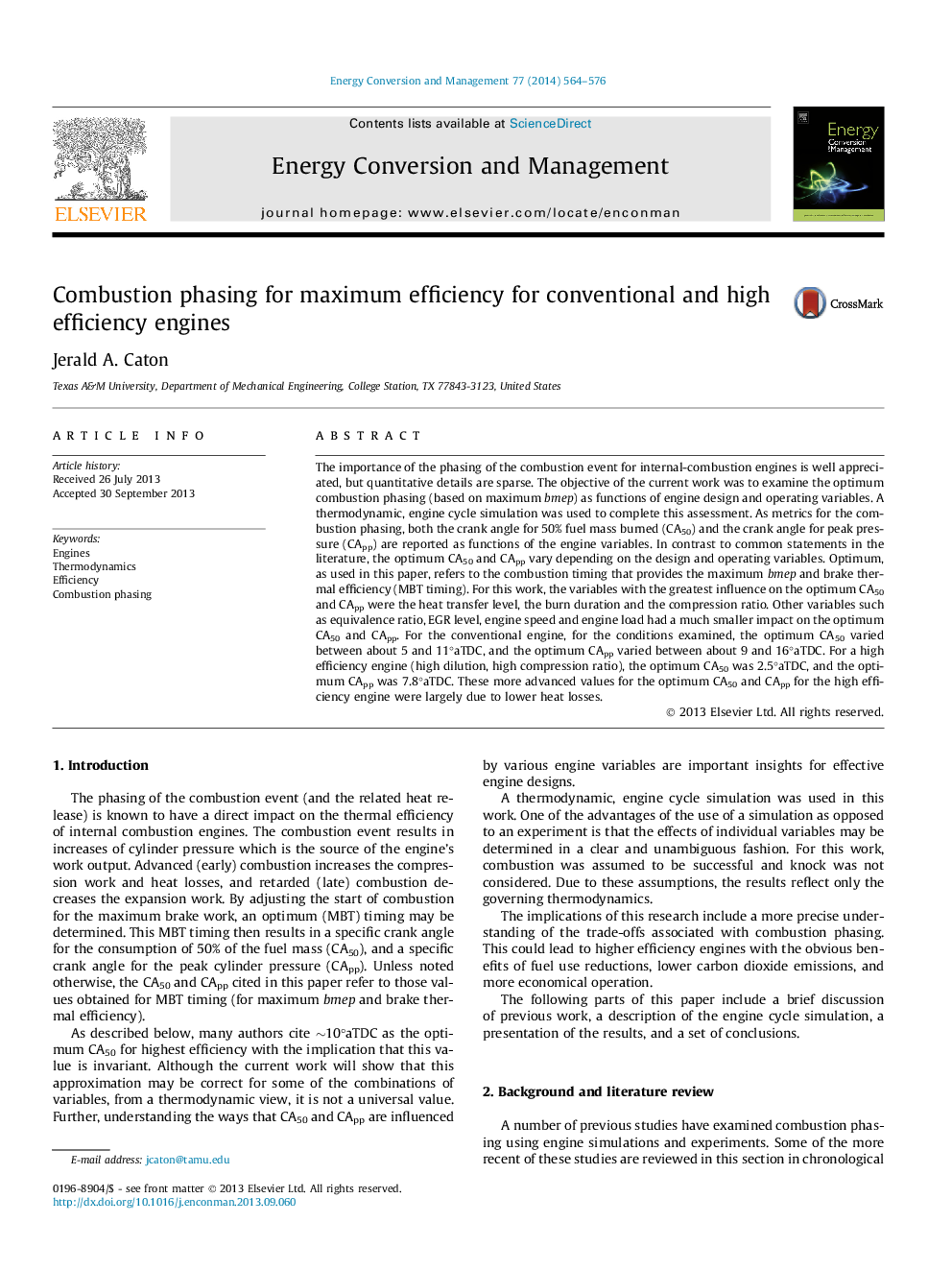| Article ID | Journal | Published Year | Pages | File Type |
|---|---|---|---|---|
| 7165937 | Energy Conversion and Management | 2014 | 13 Pages |
Abstract
The importance of the phasing of the combustion event for internal-combustion engines is well appreciated, but quantitative details are sparse. The objective of the current work was to examine the optimum combustion phasing (based on maximum bmep) as functions of engine design and operating variables. A thermodynamic, engine cycle simulation was used to complete this assessment. As metrics for the combustion phasing, both the crank angle for 50% fuel mass burned (CA50) and the crank angle for peak pressure (CApp) are reported as functions of the engine variables. In contrast to common statements in the literature, the optimum CA50 and CApp vary depending on the design and operating variables. Optimum, as used in this paper, refers to the combustion timing that provides the maximum bmep and brake thermal efficiency (MBT timing). For this work, the variables with the greatest influence on the optimum CA50 and CApp were the heat transfer level, the burn duration and the compression ratio. Other variables such as equivalence ratio, EGR level, engine speed and engine load had a much smaller impact on the optimum CA50 and CApp. For the conventional engine, for the conditions examined, the optimum CA50 varied between about 5 and 11°aTDC, and the optimum CApp varied between about 9 and 16°aTDC. For a high efficiency engine (high dilution, high compression ratio), the optimum CA50 was 2.5°aTDC, and the optimum CApp was 7.8°aTDC. These more advanced values for the optimum CA50 and CApp for the high efficiency engine were largely due to lower heat losses.
Related Topics
Physical Sciences and Engineering
Energy
Energy (General)
Authors
Jerald A. Caton,
